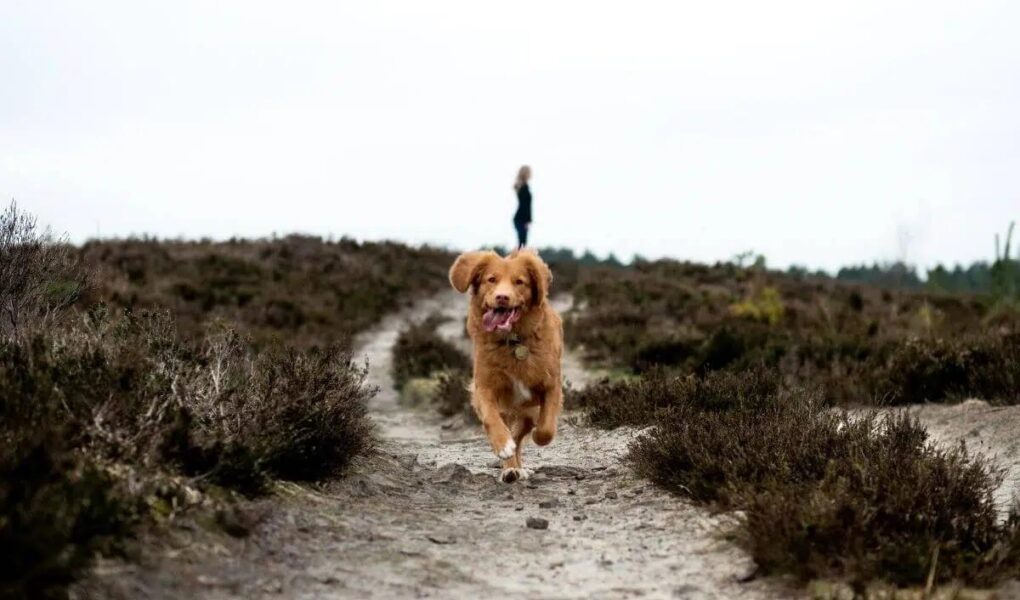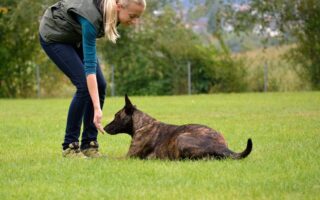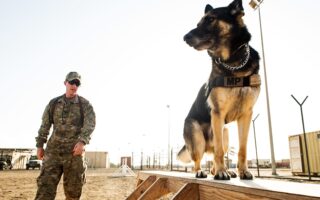Unleashing Trust: The Art of Dog Recall Training
In the grand tapestry of pet ownership, few threads are as crucial as the bond of trust between a dog and its human. Among the myriad of skills a furry companion can master, the ability to return when called—often referred to as recall training—stands out as a cornerstone of responsible dog ownership. Imagine a sunlit park, where your dog bounds freely, ears flopping in the wind, and the sweet sound of your voice effortlessly drawing them back to your side. This idyllic scene isn’t merely a whimsical fantasy; it’s an achievable reality with patience, consistency, and the right techniques. In this article, we’ll explore the nuances of dog recall training, uncovering strategies that not only enhance obedience but also foster a deeper connection between you and your canine companion. From playful beginnings to impactful, practical exercises, let’s embark on a journey that transforms your pup into a reliable partner—one recall at a time.
Table of Contents
- Mastering the Art of Recall Training Strategies for Every Dog
- Understanding the Psychology Behind Your Dogs Response to Commands
- Essential Tools and Techniques to Enhance Your Training Sessions
- Common Challenges in Recall Training and Effective Solutions
- Q&A
- To Wrap It Up
Mastering the Art of Recall Training Strategies for Every Dog
To effectively train your dog to come when called, it’s crucial to establish a strong foundation of positive associations. Start with basic commands in a distraction-free environment to ensure your dog understands what “come” means. Use high-value treats, such as small pieces of chicken or cheese, to motivate your dog. As they respond to the command, gradually increase the level of distraction and distance. Remember to keep your tone upbeat and excited to make responding to your call more appealing. A few effective strategies include:
- Foundational Training: Begin indoors in a quiet space.
- Gradual Progression: Increase distance and distractions slowly.
- Reward Early: Reinforce their response in the first seconds of return.
Incorporating games into recall training can also enhance engagement and enthusiasm. For example, playing “Hide and Seek” can be a thrilling way for your dog to practice coming to you. Another engaging method is to utilize a long leash during outdoor training sessions, providing you with better control and allowing your dog the freedom to explore while still reinforcing recall. A simple table can illustrate various recall activities:
| Activity | Description |
|---|---|
| Hide and Seek | Have your dog stay while you hide, then call them to find you. |
| Fetch and Recall | Throw a toy, then call your dog back with a treat when they return. |
| Obstacle Course | Create a mini-obstacle course, rewarding them for completing it quickly. |
Understanding the Psychology Behind Your Dogs Response to Commands
The way your dog responds to commands is rooted deeply in its psychological make-up, shaped by instinct, training, and socialization. Dogs are pack animals by nature, which means their behaviors are often influenced by their instincts to communicate and form bonds with those around them. When training your dog to recall, understanding this intrinsic urge to belong can enhance your success. Dogs learn best through positive reinforcement, which leads to a sense of accomplishment and safety in their environment. The stronger the bond you build, the more likely your dog will respond positively to your commands.
Several factors can affect a dog’s receptiveness to training commands:
- Consistency: Regularly using the same command helps dogs associate the word with an action.
- Environment: Training in a distraction-free space initially can lay a solid foundation for more complex scenarios later.
- Reinforcement Techniques: Using treats, praise, or play after a successful recall helps to solidify the positive behavior.
By understanding these psychological elements, you can tailor your approach to meet your dog’s unique needs, enhancing not just their training but also your relationship with them.
Essential Tools and Techniques to Enhance Your Training Sessions
To elevate your dog recall training sessions, incorporating a variety of tools and techniques is crucial. Start with essential items such as:
- High-Value Treats: Use small, flavorful treats that your dog absolutely loves to maintain their focus.
- Long Leash: A 25- to 50-foot leash allows for more freedom while keeping your dog safe during training.
- Clicker: This tool can help mark the exact moment your dog responds correctly, providing immediate feedback.
- Training Whistle: A whistle can carry further than your voice and can help establish a consistent cue.
In addition to tangible items, employing effective techniques can significantly impact success. Consider the following methods:
- Consistent Commands: Use a specific word or signal for recall and ensure everyone uses the same term.
- Positive Reinforcement: Always reward your dog for returning, reinforcing the behavior with praise or treats.
- Gradual Distance Increase: Start in a quiet area and progressively increase distractions and distance to build confidence.
- Practice Makes Perfect: Regular, short training sessions tend to yield better results than infrequent long sessions.
| Technique | Description |
|---|---|
| Recall Games | Incorporate fun activities like hide-and-seek to make recall practice enjoyable. |
| Controlled Distractions | Slowly introduce distractions while training to prepare your dog for real-life scenarios. |
| Positive Experiences | Create a positive association with returning by always being fun and engaging when they do. |
Common Challenges in Recall Training and Effective Solutions
Recall training can be a rewarding yet challenging process for dog owners. One common hurdle is a lack of consistency in commands and rewards. If different family members use varying cues or fail to reinforce the behavior consistently, dogs can become confused, leading to unreliable recall. To combat this, establish a unified approach among everyone involved in the training. Set clear rules and agreed-upon commands, ensuring that your pup receives the same signal regardless of who is calling. Additionally, consider some of these strategies:
- Positive reinforcement: Always reward your dog when they successfully return.
- Short, frequent sessions: Keep training sessions brief but engaging.
- Gradual distraction increase: Start in low-distraction environments before moving to busier areas.
Another significant challenge is the environmental distractions your dog may face. Unpredictable stimuli, like other animals or loud noises, can easily draw their attention away. To improve their focus, gradually introduce distractions at a manageable level during training sessions. Create a progressive distraction table to track your dog’s responses and adjust your training accordingly:
| Distraction Level | Environment | Desensitization Technique |
|---|---|---|
| 1 | Quiet backyard | Basic commands with treats |
| 2 | Park with few dogs | Call and reward intermittently |
| 3 | Busy dog park | Use a long line and practice recalls |
By addressing these challenges with tailored strategies, you can lay a strong foundation for your dog’s recall abilities. Remember, patience and practice are key ingredients for success!
Q&A
Q&A: Mastering the Art of Dog Recall Training
Q1: What is dog recall training, and why is it important?
A1: Dog recall training involves teaching your dog to come back to you when called. It’s crucial for their safety and your peace of mind. A reliable recall can prevent accidents in crowded places, enhance your dog’s freedom during walks, and help you maintain control in unpredictable situations.
Q2: At what age should I start recall training with my dog?
A2: You can start recall training as early as a puppy, usually around 8 weeks old. However, older dogs can also learn this skill, regardless of age. The key is to keep the training sessions positive and engaging, ensuring your dog sees returning to you as a rewarding experience.
Q3: What techniques can I use to train my dog to recall effectively?
A3: Several techniques can be helpful, including:
- Positive Reinforcement: Use treats, toys, or praise to reward your dog when they come back to you.
- Motion and Energy: Call your dog enthusiastically and move away from them, which can motivate them to follow you.
- Gradual Distance Increase: Start training in a secure area and gradually increase the distance between you and your dog.
- Consistency: Use a specific command or phrase every time you call your dog, so they recognize it as a recall cue.
Q4: How can I make recall training fun for my dog?
A4: Keep the sessions playful! Incorporate games like hide and seek, where you call your dog to find you, or play with their favorite toy once they come. Changing locations or using a flirt pole can also add excitement to training, making it more enjoyable.
Q5: What common mistakes should I avoid during recall training?
A5: Avoid these pitfalls:
- Inconsistency: Use the same cue every time and ensure everyone in your household is on board with commands.
- Punishment: Never scold your dog for not coming back, as this creates negative associations with the recall.
- Too much distraction too soon: Start training in a quiet environment before introducing distractions to keep your dog focused.
Q6: How long will it take for my dog to master recall?
A6: The timeline can vary widely among dogs based on breed, age, and prior training. Some may grasp the concept in a few sessions, while others may take weeks or longer. Regular practice and positive reinforcement will yield progress over time, so patience is key!
Q7: How do I reinforce recall training in real-life situations?
A7: Reinforce recall during everyday activities! When you’re outside, practice calling your dog intermittently while on a leash. If your dog successfully comes to you, reward them immediately. Gradually allow more freedom by transitioning to long lines before practicing off-leash.
Q8: What are some additional resources I can use to improve my dog’s recall?
A8: Consider enrolling in professional training classes or workshops, where you can get personalized guidance. Books and online videos focused on recall training can also provide valuable insights. Additionally, apps that facilitate training schedules and progress tracking might keep you motivated.
Q9: What should I do if my dog has a poor recall?
A9: If your dog struggles with recall, revisit basic training techniques. Ensure you are in an environment with minimal distractions and consider shortening the distance. Always make recalling a rewarding experience, and consult a professional trainer if you’re feeling stuck.
Q10: Can different breeds have different recall abilities?
A10: Yes, breed traits can influence a dog’s recall abilities. For example, herding breeds are often eager to return to their handlers, while scent hounds may be more focused on following scents than responding to their name. Tailor your training approach based on your dog’s instincts and characteristics for optimal results!
With patience, consistency, and lots of love, you’ll definitely enhance your dog’s recall skills, ensuring they are safe and happy on every adventure together!
To Wrap It Up
dog recall training is not merely a task; it’s a vital bridge that connects the bond between you and your furry companion. As you embark on this journey, remember that patience and consistency are your greatest allies. Each successful recall reinforces trust, empowering your dog with the freedom to explore while ensuring their safety.
Whether you’re working with a spirited puppy or a wise old friend, the principles of recall training remain steadfast. Embrace the process, celebrate the small victories, and adapt your methods to suit your dog’s unique personality and needs.
Ultimately, the reward of a reliable recall is more than just obedience; it’s a shared experience of joy, adventure, and exploration. Your dog is a reflection of your training efforts, and as they come running back to you with tails wagging and hearts full, you’ll understand that this connection is truly worth every moment spent refining their skills. Happy training!



